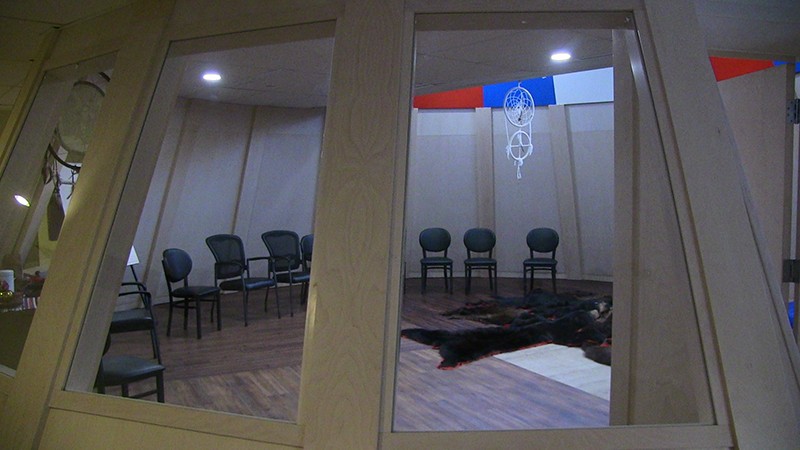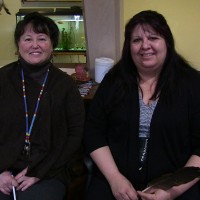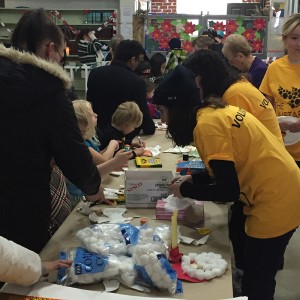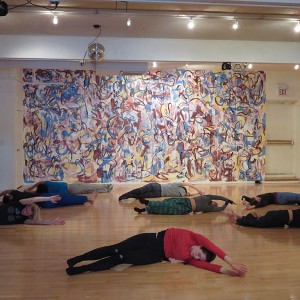Ambrose Place: One Year Later
Safe, supportive housing for Indigenous people has many success stories.

When the board of Ambrose Place (Niginan Housing Ventures on 9629 106 Avenue) first began designing and securing support for the project, they came up with the original mission of providing safe, supportive housing services to homeless individuals and couples of Indigenous descent. Their primary goals were:
1. House and keep people housed, creating a safe home for individuals.
2. Improve the quality of life of the residents.
3. Build community and to involve the residents in the development and management of their community.
4. Provide residents with a sense of control over their own lives.
Ambrose Place started accepting its first tenants in late 2014. The year and few months that have followed have seen changed lives and fresh starts for many who have passed through its doors.
“I believe that we have absolutely surpassed and created a place where the Indigenous people can truly begin the first step of decolonization in that they have their own home where they can eat traditional food; speak their language; practice their value system and ceremonies; and, share their sense of humor with one another,” says Executive Director Carola Cunningham. “Also, a place where they are supported by Indigenous staff that celebrate each person’s life and instill hope for pimatisowin (good life). This is what it is like to be at home with yourself and your community.”
Cunningham also notes that Ambrose Place has saved significant public money. For example, the number of calls for ambulances for some residents, which can cost around $500 per call, has been dramatically reduced. Run-ins with the police and legal system, which can lead to mounting public costs, are also fewer for some. This is typical of social housing – according to the Canadian Housing and Renewal Association (CHRA), supportive/social housing costs $25-$31 a day, compared to a psychiatric inpatient bed at $665/day or jail at $143 day.
In addition, Ambrose Place strives to be a good neighbour and contribute to the community, with residents and staff pitching in to pick up garbage and beautify the grounds.
Most of all, Ambrose Place has had a tremendous role to play in helping people get their lives back on track. Over the past year, in the 14 affordable suites, 20 individuals have been assisted to build a rent record, obtain ID, secure employment/training, and, in some cases, get their children returned before moving into more independent living arrangements. In the 28 permanent supportive living units, Ambrose Place has housed 46 individuals as singles or couples. Of those who moved out, Cunningham says that most relocated to other communities or felt well enough to live unsupported.
“There have been so many amazing life-changing stories,” she continues. “Individuals that needed critical surgery for some time while on the street and who were unable to slow things down to be healthy enough for surgery. Individuals who have been diagnosed as terminal have lived past their life expectancy and are thriving. One lady was able to contact all of her nine children, explain why she gave them up, and speak to how her addiction had impacted all their lives. Some of those children have reacquainted themselves with their mother at Ambrose Place. They have heard the words they have longed to hear all of their lives, such as, “I love you” and, “it is not your fault.”
Ambrose Place’s first resident was the first to pass away, but even he experienced better quality of life. He arrived at the facility needing palliative care, and lived beyond the two months he was told he had left, passing away in June. “He was so happy to live here at Ambrose and often made bannock and duck soup. He told me often that he loved how kindly the staff treated him; how we lifted everyone up,” says Cunningham.
Success can also be measured in residents who have achieved stability that many take for granted. “People on the affordable floor have had an opportunity to have a permanent address; secure employment; build a rental history; and move on in life. Mothers in the process of working towards reclaiming responsibility for their children have built a foundation of sobriety as well as a rental history. They have been reunited with and moved on with their children in tow,” says Cunningham.
“Most significant is that people are accepted where they are at. Once housed, fed, and feeling safe they have slowed their intake of alcohol and drugs. On four separate occasions people who we never would have thought had any desire to pursue sobriety have stopped drinking and gone to treatment. That is not to say that there haven’t been setbacks. Yet it is important to note that no judgment is attached to their setbacks. We just provide kindness and support.”
Some future goals for Ambrose Place, according to Cunningham, include building a volunteer program, as numerous people have asked about volunteer opportunities. She also says that they need a van and a small car to assist residents in getting to medical or legal appointments. “A van would come in handy to take people to the larger rural Indigenous communities to attend ceremonies, cultural camp, and medicine gathering,” she says.
Ambrose Place also wants to continue to break down stereotypes concerning homelessness and addiction in relation to the harm reduction model. “As people become housed and adjusted to the concept of safe, secure housing their behaviours and lifestyle choices change,” Cunningham explains. “By applying the medicine wheel philosophy to harm reduction and alcohol intake, the whole person is taken into account. If a person has a mental, physical emotional or spiritual incapacity or is on prescribed meds we work with heath care professionals, elders, and staff to assist the individual in making choices. This may include ensuring that amounts and time administered alcohol will not interfere with their needed medication.”
In addition, Cunningham says that Ambrose Place will “continue to expand engagement with other communities, [residents’] own communities, families, and work opportunities.”
Finally, Ambrose Place seeks “to share our model with others to create other possibilities for the homeless. And, to educate and share the cause and effects of homelessness by training our tenants to be speakers and presenters alongside us.”










